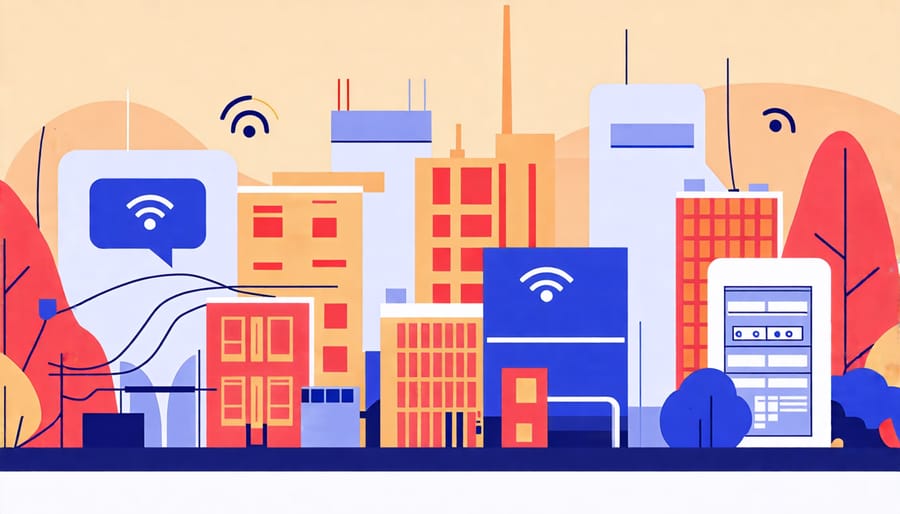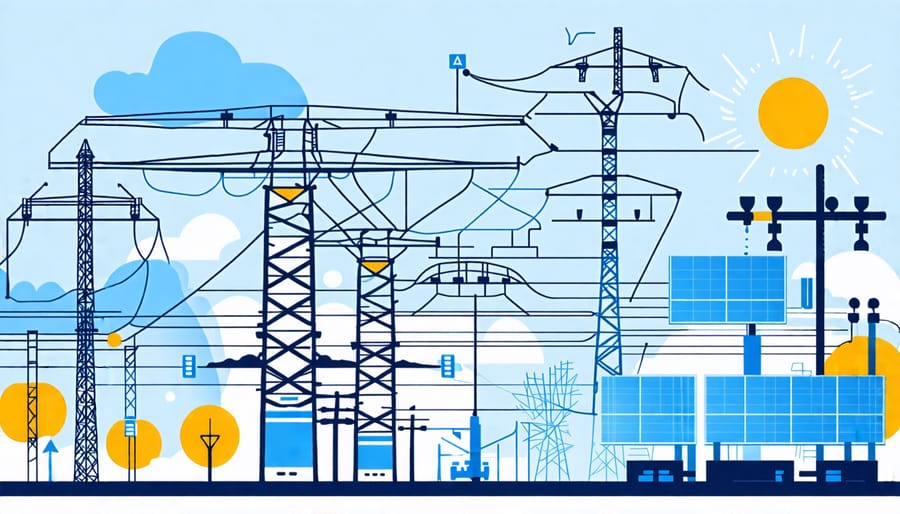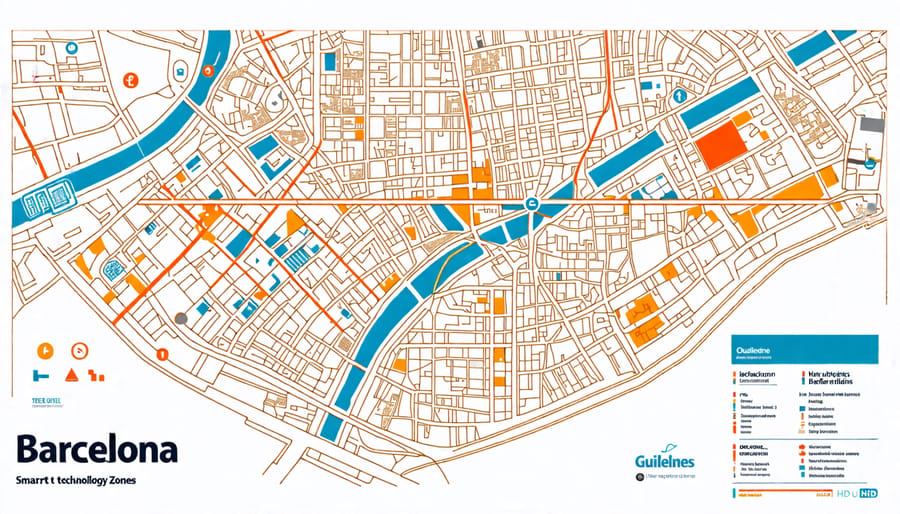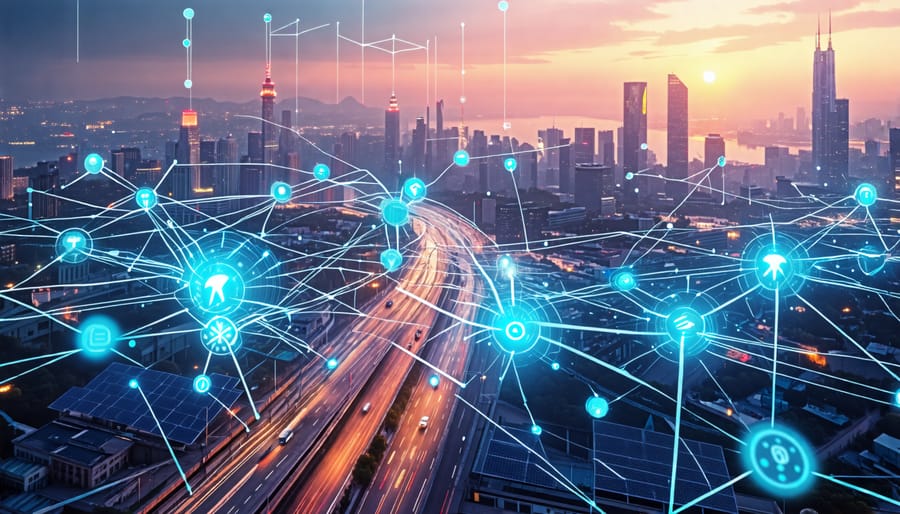Integrate advanced data analytics to enhance traffic management by utilizing IoT-enabled sensors and artificial intelligence to monitor and respond to real-time traffic conditions effectively. Enhance environmental sustainability by deploying smart energy grids and green building technologies, optimizing resource usage while reducing carbon footprints. Collaborate with urban planners and technologists to develop adaptive architectural designs that accommodate evolving city dynamics and enhance resilience against climate challenges. Leverage digital twin technology to simulate city infrastructure scenarios, enabling proactive maintenance, efficient resource allocation, and long-term strategic planning.
Core Components of Smart City Infrastructure
Internet of Things (IoT) in Urban Planning
The integration of Internet of Things (IoT) devices plays a pivotal role in transforming urban planning by enabling more efficient data collection and city management. These devices collect real-time data on environmental conditions, traffic patterns, energy consumption, and public safety. By leveraging this data, city planners and engineers can make informed decisions to optimize urban infrastructure, leading to smarter, more sustainable cities. For instance, IoT sensors embedded in traffic lights can dynamically adjust signal timings based on live traffic flows, reducing congestion and pollution. IoT applications also enhance resource management in Smart Buildings, improving efficiency through automated systems controlling lighting, heating, and security. Furthermore, IoT-driven waste management systems can optimize collection routes and schedules, significantly cutting down operational costs while minimizing environmental impact. As cities continue to grow, the adoption of IoT technologies will be essential in addressing urbanization challenges, facilitating data-driven insights and strategies that underline future smart city development.

Smart Grids and Energy Efficiency
Smart grids are pivotal in transforming urban energy landscapes, catering to efficiency and sustainability demands. These advanced systems enable real-time monitoring and management of energy resources, ensuring optimal distribution and minimization of waste. By integrating renewable energy sources such as solar and wind, smart grids facilitate a balanced energy mix that lessens reliance on fossil fuels. Industry experts highlight the role of smart grids in enhancing grid reliability through predictive maintenance and automated fault detection, significantly reducing downtime and operational costs.
Case studies of cities employing smart grid technology demonstrate notable improvements in energy efficiency and resilience. For instance, by adopting adaptive signaling and automated energy distribution, cities can lower consumption during peak times, aligning with energy savings objectives. Furthermore, the capability of smart grids to provide dynamic pricing models encourages consumers to adjust usage patterns, contributing to demand-side management. As urban centers grow, smart grids stand as a cornerstone of sustainable city infrastructure, embodying the future of energy efficiency.

Intelligent Traffic Management Systems
Intelligent traffic management systems are pivotal in optimizing urban mobility, reducing congestion, and enhancing overall city efficiency. By harnessing cutting-edge technologies such as IoT sensors, AI, and machine learning, these systems provide real-time data analysis, enabling adaptive traffic signal control and predictive analytics. This dynamic approach not only alleviates bottlenecks but also improves emergency response times and public transit coordination. Insights from expert interviews and case studies reveal how cities implementing these systems have successfully mitigated traffic woes, reduced emissions, and improved commuter experiences. As smart cities evolve, intelligent traffic management solutions continue to play a crucial role in sustainable urban development.
Challenges in Implementing Smart City Infrastructure
Data Privacy and Security Concerns
As smart city infrastructure continues to evolve, its dependence on data-driven technologies introduces significant data privacy and security concerns that demand urgent attention. Construction professionals and industry decision-makers must recognize that these technologies, while essential to transform project execution, also pose risks. With the integration of IoT devices, sensors, and data analytics into urban environments, there is an increase in the volume of sensitive information being collected, stored, and analyzed. This data can range from personal citizen information to critical infrastructure details. Unauthorized access or data breaches can lead to privacy violations and jeopardize public safety. Furthermore, cyber-attacks targeting smart city systems can disrupt services and cause chaos within urban settings. Therefore, implementing robust cybersecurity measures and data protection protocols is crucial. Collaborating with cybersecurity experts and adopting advanced encryption techniques are vital steps in mitigating these risks. Proactive deployment of secure infrastructures not only safeguards data integrity but also fosters trust and confidence in smart city initiatives.
Infrastructure Costs and Funding
Financing smart city projects presents substantial challenges, particularly due to the high infrastructure costs involved. These expenses arise from integrating advanced technologies for connectivity, data management, energy efficiency, and climate resilient infrastructure. Public funding alone often falls short, necessitating innovative strategies to bridge financial gaps. Public-private partnerships (PPPs) have emerged as a pivotal approach, where private sector investment supplements public funds, promoting shared risk and benefits. PPPs enable cities to attract the necessary capital to advance projects while leveraging private expertise in technology deployment. Furthermore, smart cities are increasingly seeking alternative funding sources, such as green bonds and infrastructure investment funds that appeal to environmentally conscious investors. Grant mechanisms from international bodies and governments also provide vital financial support, ensuring projects align with broader developmental and sustainability goals. As smart city ambitions grow, a comprehensive understanding of these funding dynamics is crucial for professionals navigating this complex landscape.
Case Studies: Successful Smart City Projects
Singapore: A Leader in Smart City Innovation
Singapore has emerged as a global leader in smart city innovation, driven by its strategic vision and commitment to harnessing technology for urban development. At the heart of Singapore’s success is its Smart Nation initiative, designed to leverage data and technology to enhance the quality of life for its citizens. Through a connected infrastructure, Singapore has implemented a range of smart solutions that offer insights for construction professionals looking to integrate similar technologies.
One standout feature is the deployment of an intelligent transportation system, which utilizes real-time data analytics to optimize traffic flow, reduce congestion, and improve public transport efficiency. This initiative not only enhances urban mobility but also provides engineers and project managers with valuable data for future urban planning.
Moreover, Singapore’s commitment to sustainability is evident through its use of smart energy management systems. These systems facilitate energy conservation by monitoring consumption patterns and integrating renewable energy sources, setting a benchmark for architects and construction managers aiming for eco-efficient designs.
Singapore’s approach is further informed by its extensive use of digital twin technology—a virtual model of the city that helps in simulating and analyzing urban dynamics. This cutting-edge technology offers architects and engineers a robust platform for testing various scenarios before implementation.
Through such strategic initiatives, Singapore not only addresses immediate urban challenges but also sets a progressive blueprint for smart city infrastructure, demonstrating the transformative potential of integrating advanced technologies into urban environments.
Barcelona: Enhancing Urban Living with Smart Technology
Barcelona stands at the forefront of urban transformation, leveraging smart technology to enhance urban living. Through an intricate network of IoT devices and data-driven solutions, the city addresses challenges inherent in dense urban environments. This transformation is evident in areas such as traffic management, where intelligent traffic lights and sensor-based parking systems have significantly reduced congestion and pollution.
The city’s smart water management system optimizes water usage through real-time monitoring, contributing to sustainability and cost efficiency. Barcelona’s street lighting uses motion sensors and LED technology, achieving energy savings while improving public safety. Central to these innovations is the city’s commitment to open data, enabling developers to create applications that further enrich urban experiences, facilitating a collaborative approach to solving urban issues.
From a construction perspective, these initiatives highlight the vital role of integrating smart infrastructure into urban planning. The city’s dedication to continuous improvement and resilience is showcased through projects such as the Superblock program, which reclaims public spaces for pedestrians by diverting traffic. As a result, Barcelona not only enhances its residents’ quality of life but sets a benchmark for smart city development worldwide, offering valuable insights for construction professionals and urban planners looking to adopt similar strategies.

The Future of Smart City Infrastructure
The future of smart city infrastructure promises transformative advancements, driven by the convergence of emerging technologies. As urban areas continue to expand, integrating cutting-edge solutions will become imperative for sustainable development. Emerging construction technology trends, such as IoT integration, AI-driven analytics, and the deployment of 5G networks, are set to revolutionize urban planning and management. These technologies will enable more efficient resource allocation, real-time traffic management, and enhanced public safety measures.
Experts predict that smart cities will increasingly leverage digital twins—virtual models of physical environments—to simulate and optimize city operations. This innovation will empower engineers and architects to analyze and improve urban layouts, reducing environmental impact while enhancing inhabitant quality of life. Energy management will also be a focal point, with smart grids facilitating a shift towards renewable energy sources, minimizing carbon footprints, and ensuring reliability through advanced analytics and machine learning.
Furthermore, advances in construction materials, such as self-healing concrete and sustainable building techniques, will complement technological integration, ensuring that infrastructure is resilient and environmentally friendly. As these technologies mature, collaboration between construction professionals, urban planners, and technology developers will be crucial in realizing the full potential of smart city infrastructures. The ongoing evolution of these elements underscores a pivotal shift towards cities that are not only intelligent but also adaptive and resilient to future challenges.
Conclusion
In conclusion, the integration of smart city infrastructure fundamentally transforms urban living by enhancing sustainability, efficiency, and quality of life. Through expert interviews and case studies, we see that the strategic adoption of technologies like IoT, data analytics, and resilient building practices lead to more responsive and adaptive cities. The role of construction professionals, architects, and engineers is crucial in designing and implementing these infrastructures, emphasizing the need for industry collaboration and innovation. As urbanization accelerates, smart city development will play a pivotal role in addressing challenges like resource management and environmental impact, ultimately shaping the future of urban environments.

